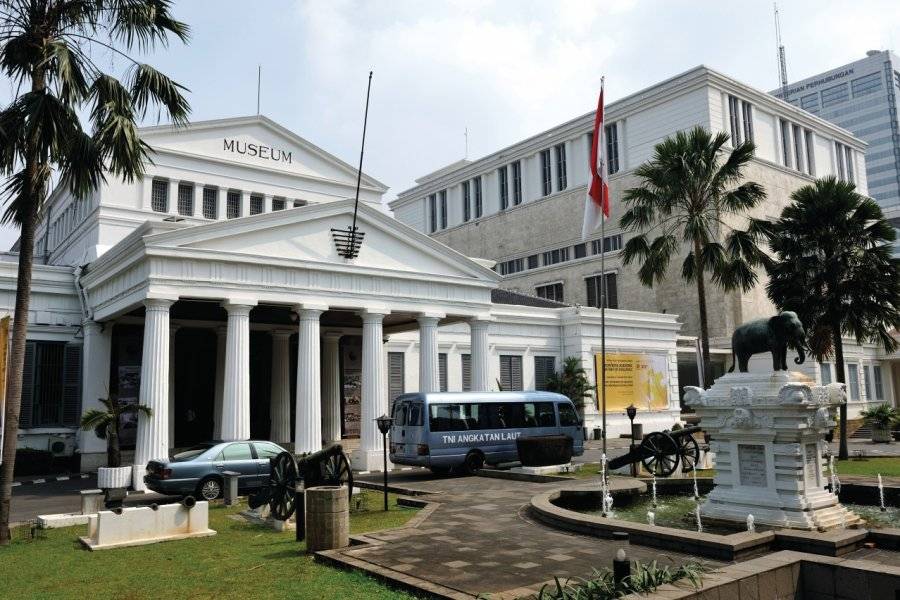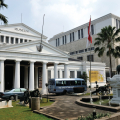NATIONAL MUSEUM (GEDUNG GAJAH)
Museum housing a rich collection of prehistoric, anthropological and archaeological objects, to visit in Jakarta.
Formerly the headquarters of the Dutch Society for the Arts of the Dutch East Indies (the Bataviaasche Genootschap), the museum officially opened in 1868, and is known as Gedung Gajah ("House of the Elephant") in reference to the bronze statue at the entrance, donated by the King of Thailand in 1871. The original aim of the establishment was to promote research, mainly in the fields of history, archaeology and ethnology. The diversity of Indonesian culture and the history to which it bears witness make it one of the richest in Southeast Asia. The museum boasts a collection of 61,600 prehistoric and anthropological objects, and 5,000 archaeological artefacts from all over Indonesia and Asia. Unfortunately, the pieces are not always indicated. Here are a few pointers:
The Treasure Room. The room features treasures acquired from various Indonesian kingdoms, Istanas, Kratons and temples throughout the Indonesian archipelago. The pieces are arranged by island: Sumatra, Java, Bali, Borneo, Sulawesi, and eastern Indonesia (Nusa Tenggara, Maluku and Papua). On display are a variety of precious royal objects, including jewelry and weapons made of gold and precious stones. There are also collections of gold Balinese kriss , gold royal crowns, a gold throne, gold royal regalia, swords and even a gold shield.
The ceramics collection. The collection includes ceramics from the Majapahit Empire, as well as from China, Japan, Vietnam, Thailand and Burma. Chinese ceramics dating back two millennia provide a good overview of Indonesia's maritime trade over the centuries. The Chinese sailed to India via Indonesia as early as the Western Han period (205 BC to 220 AD) as part of the maritime Silk Road.
The ethnography collection. The ethnographic collection includes a wide variety of objects that form part of everyday Indonesian life, as well as other items used in ceremonies and rituals. The collections are classified according to the geographical location of each of the regions and islands of the Indonesian archipelago: Sumatra, Java, Kalimantan, Bali, Lesser Sunda Islands (Nusa Tenggara), Sulawesi, Maluku, and Papua. Examples of ancient cultures include the Nias and Batak of Sumatra, the Baduis of Java, the Balinese, the Dayak of Kalimantan, the Torajas of Sulawesi, and the Asmats and Danis of Papua.
The prehistory collection. Here you'll find Stone Age artifacts such as fossil skulls and skeletons of Homo erectus, Homo floresiensis and Homo sapiens, stone tools, menhirs, beads, stone and bronze axes.
The relic collection. Old relics from colonial Indonesia, from the time of the Dutch East India Company (VOC) to the Dutch East Indies. Most of the pieces are antique colonial furniture. However, most of the collections have been moved to the Jakarta History Museum, which presents the colonial history of Batavia (formerly Jakarta).
Travel advisory: please note that the National Museum of Indonesia will temporarily close its doors for up to one year, following a fire caused by an electrical short-circuit on September 16, 2023.
Did you know? This review was written by our professional authors.
Members' reviews on NATIONAL MUSEUM (GEDUNG GAJAH)
The ratings and reviews below reflect the subjective opinions of members and not the opinion of The Little Witty.


